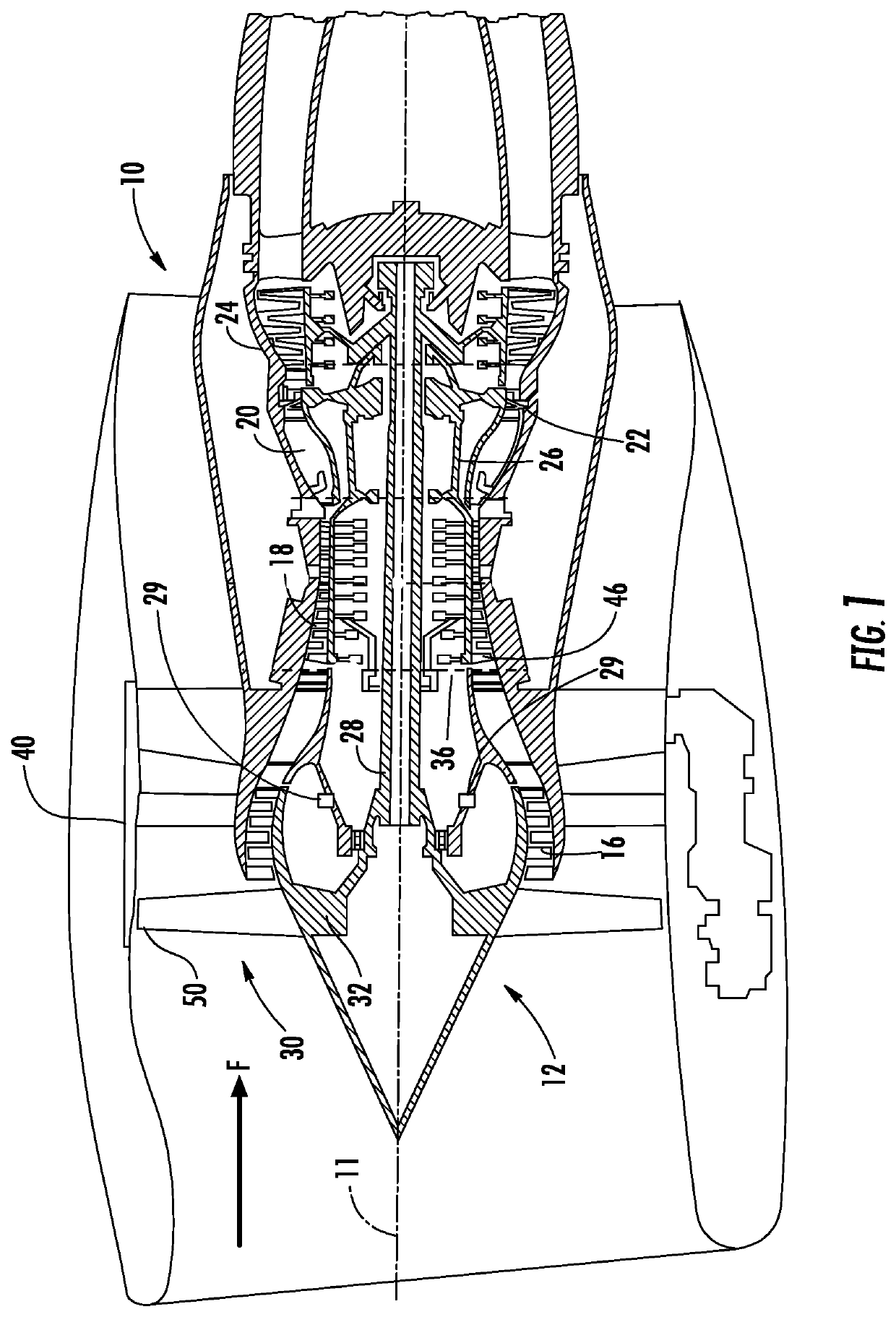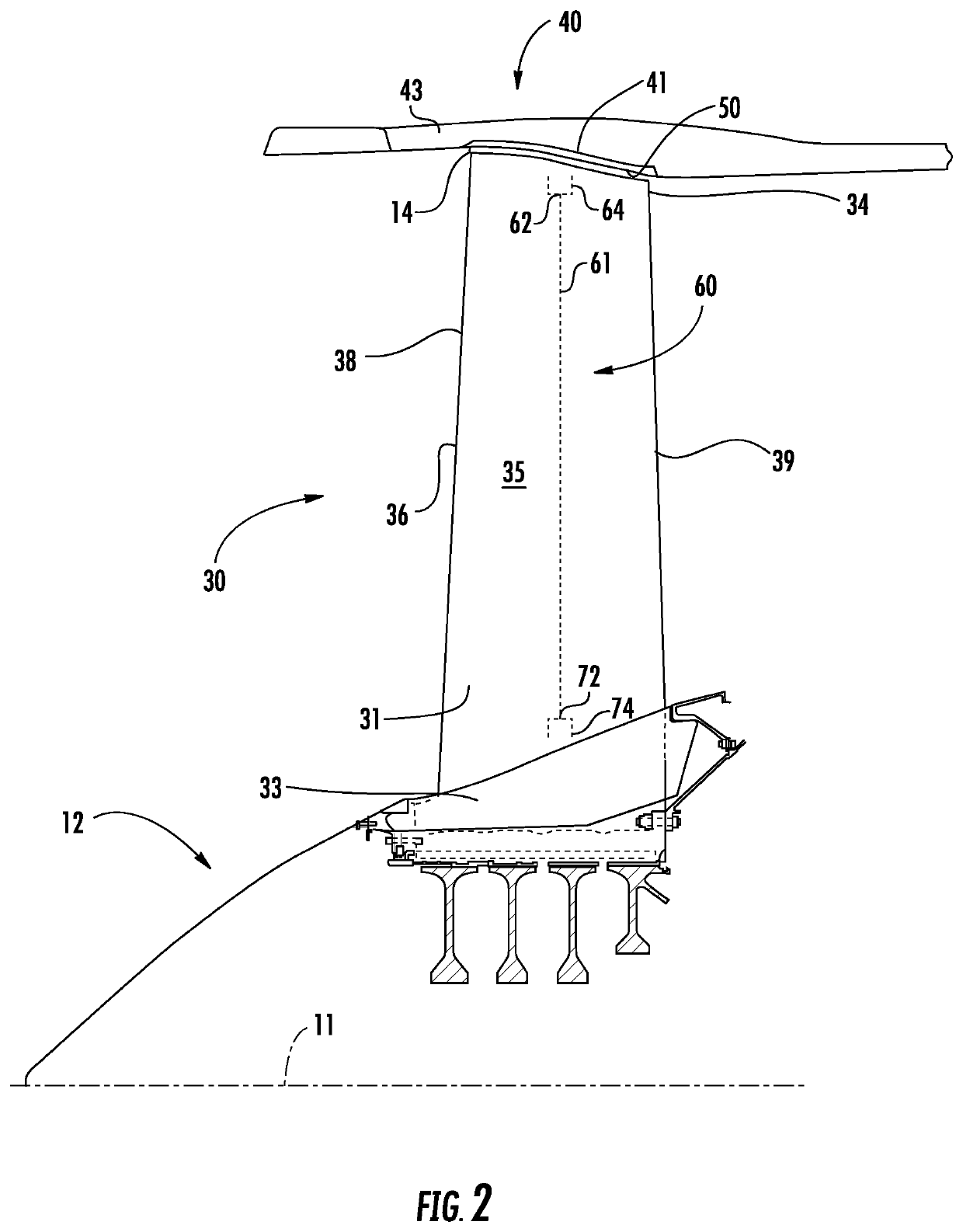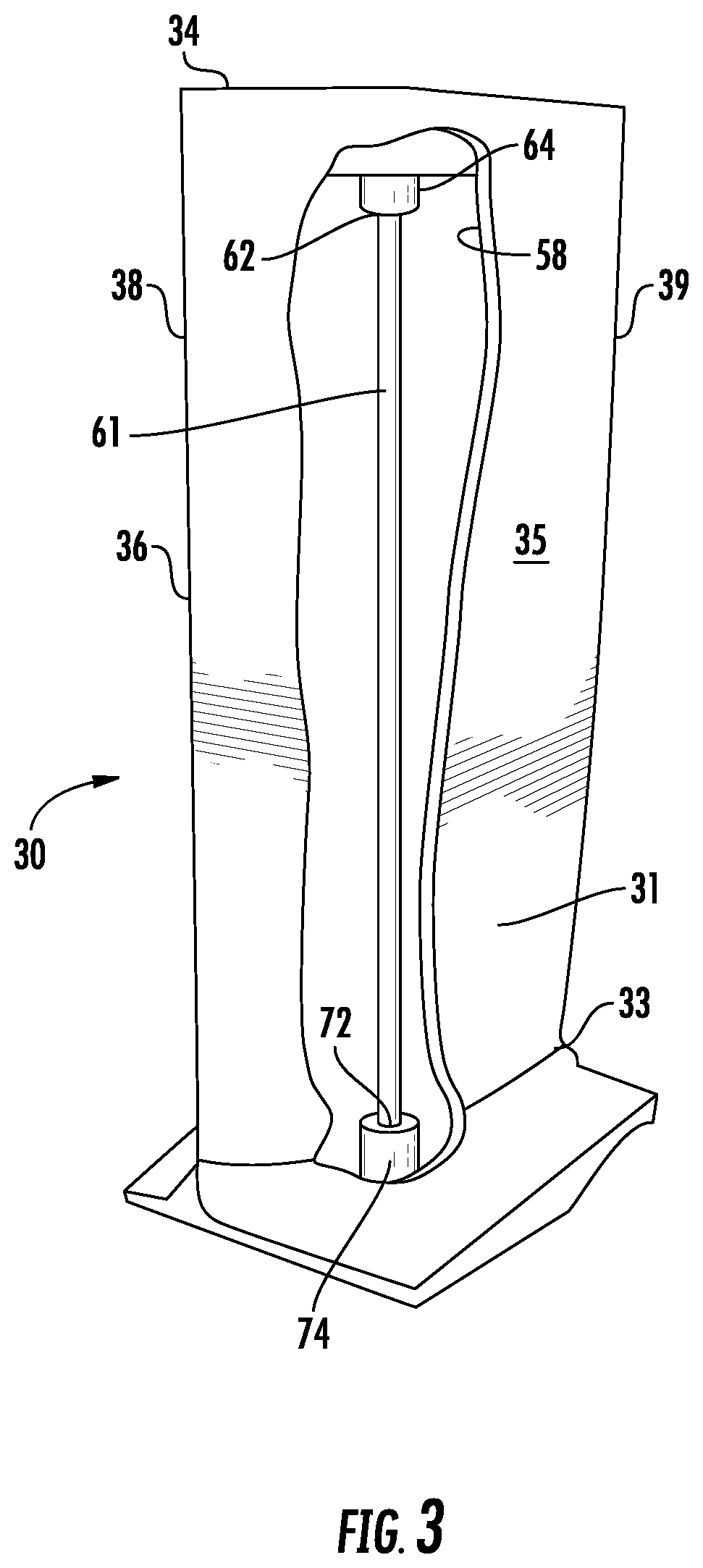Pre-tension and retention structure for composite fan blade
- Summary
- Abstract
- Description
- Claims
- Application Information
AI Technical Summary
Benefits of technology
Problems solved by technology
Method used
Image
Examples
Embodiment Construction
[0019]Referring to the drawings wherein identical reference numerals denote the same elements throughout the various views, FIG. 1 depicts an exemplary gas turbine engine 10 that includes a propulsion apparatus. While the illustrated example is a high-bypass turbofan engine, the principles of the present invention are also applicable to other types of engines, such as low-bypass turbofans, turbojets, turboprops, etc. The engine 10 has a longitudinal center line or axis 11.
[0020]It is noted that, as used herein, the terms “axial” and “longitudinal” both refer to a direction parallel to the centerline axis 11, while “radial” refers to a direction perpendicular to the axial direction, and “tangential” or “circumferential” refers to a direction mutually perpendicular to the axial and radial directions. As used herein, the terms “forward” or “front” refer to a location relatively upstream in an air flow passing through or around a component, and the terms “aft” or “rear” refer to a locat...
PUM
| Property | Measurement | Unit |
|---|---|---|
| Temperature | aaaaa | aaaaa |
| Pressure | aaaaa | aaaaa |
| Distance | aaaaa | aaaaa |
Abstract
Description
Claims
Application Information
 Login to View More
Login to View More - R&D
- Intellectual Property
- Life Sciences
- Materials
- Tech Scout
- Unparalleled Data Quality
- Higher Quality Content
- 60% Fewer Hallucinations
Browse by: Latest US Patents, China's latest patents, Technical Efficacy Thesaurus, Application Domain, Technology Topic, Popular Technical Reports.
© 2025 PatSnap. All rights reserved.Legal|Privacy policy|Modern Slavery Act Transparency Statement|Sitemap|About US| Contact US: help@patsnap.com



